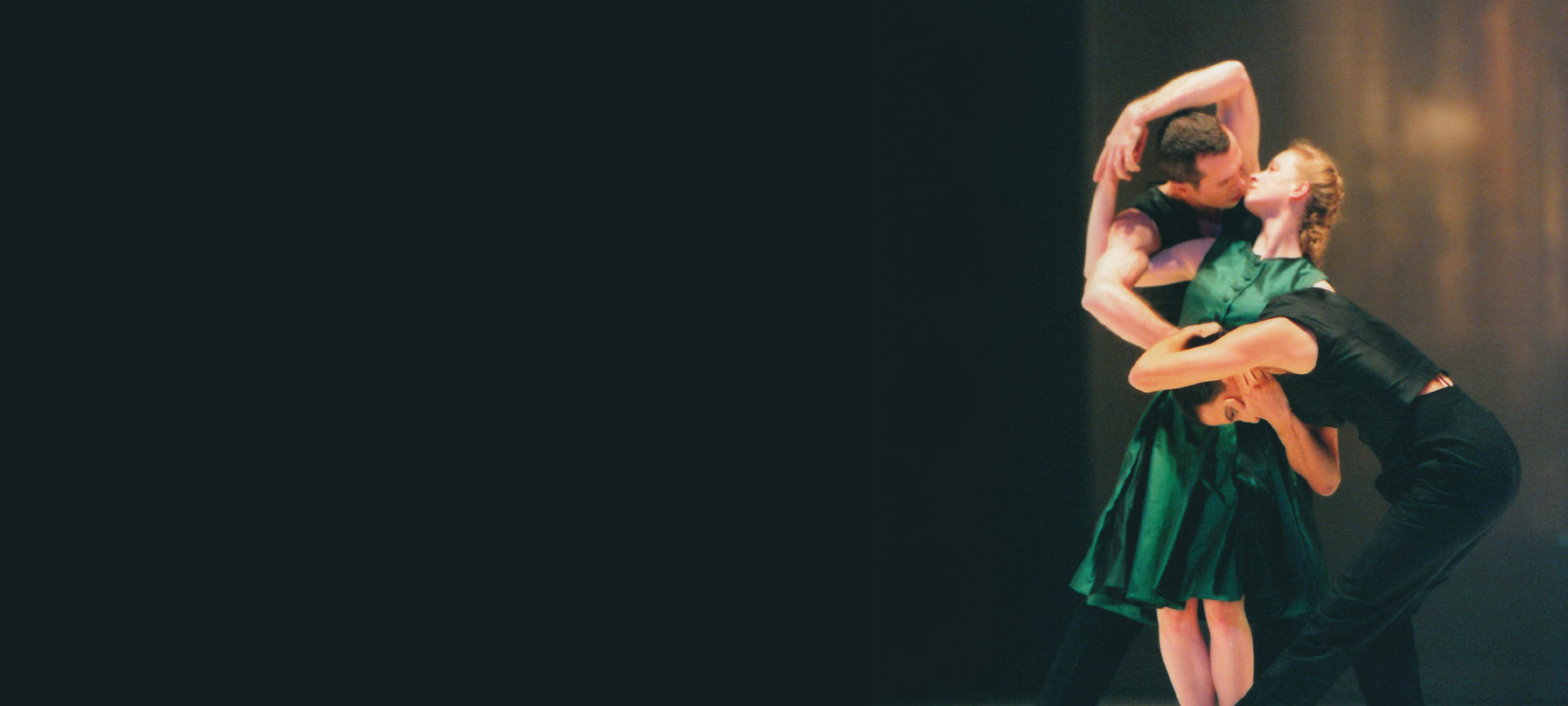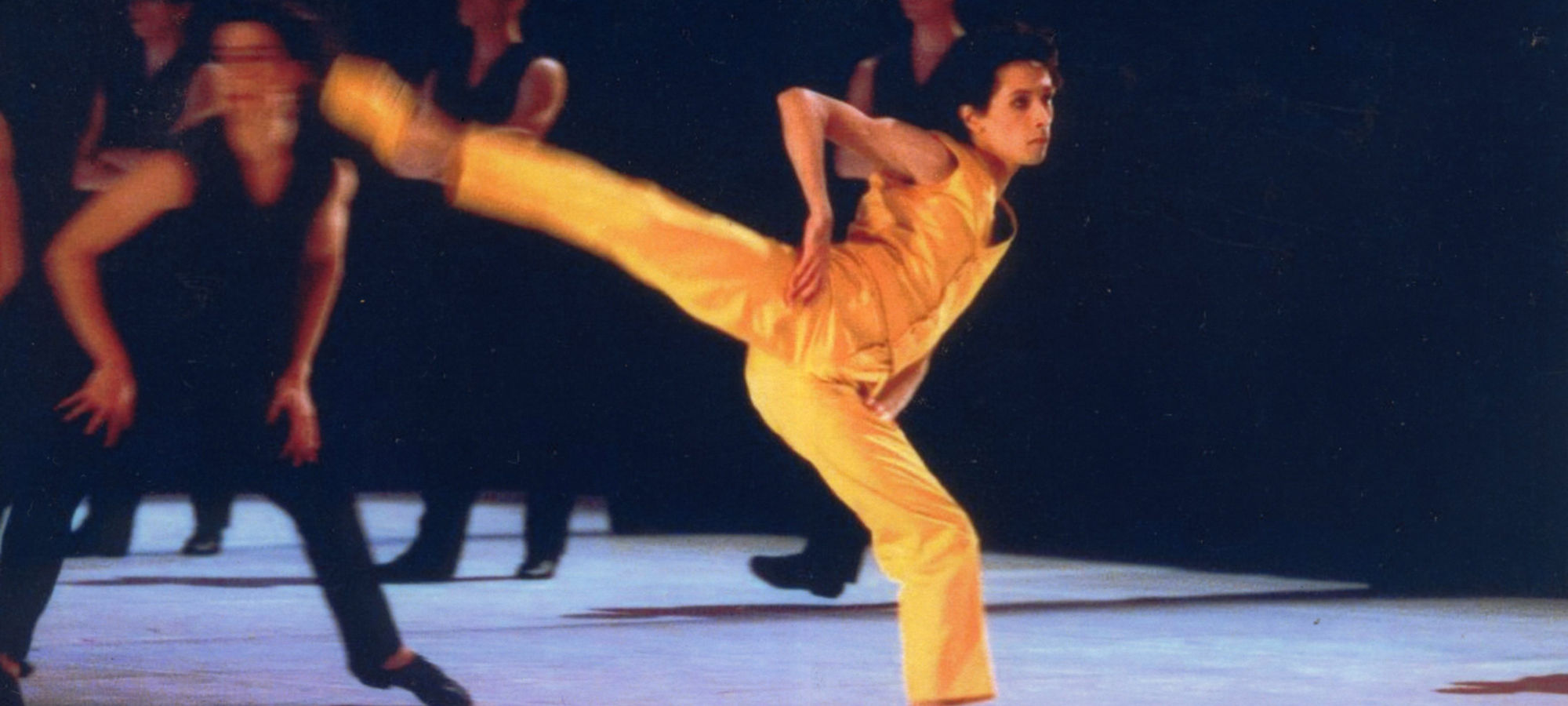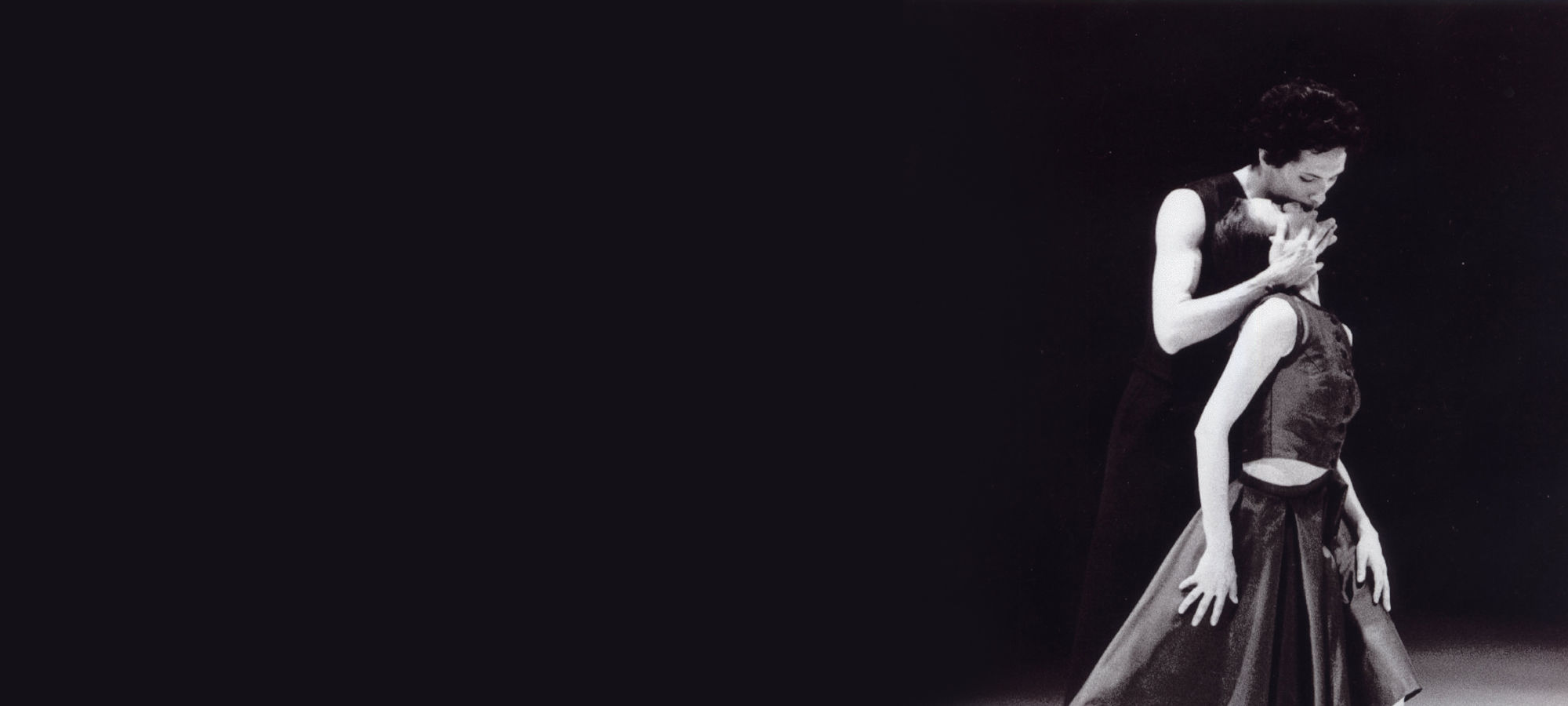
Reversibility
The ballet
Reversibility ... This title borrowed from a poem by Baudelaire alludes to rehearsals with artists from the Opera Ballet and the quest for an intersecting point between two very different worlds of dance. Around this point, which could function as a frontier, a place of separation, but also of encounters and reconciliation, I tried to make all the issues raised by the creation of a new work converge, be it a question of set design and lighting dividing the space, of costumes in alternating colors, of a musical program uniting two radically different works by Maurice Ravel, or the choreographic composition in constant sway. Taking into account the vastness of this theater, writing so that every dancer – despite the number – defends a score they find engaging, and pursuing the lavish momentum of their virtuosity are the means to achieve, a privilege of dance, a state of equilibrium in constant motion that will be our common language. The Concerto for the left hand is heard first and is followed by the Pavane pour une infante défunte. The animated power and gravity of the first seem to announce a drama. The alternating piano and orchestral parts depict internal torment more than rivalry, and subside towards the end, or maybe wither away. After the enormity of the Concerto, and prolonging the calm, the Pavane – for this occasion interpreted at the piano – provides a contrast "following a gentle, lazy and slow pace" (Baudelaire). In their respective titles, both works explore the idea of separation, physical in the first instance and emotional in the second. I hope this idea will evoke conflictual feelings that oscillate between refusal and resignation, the desire for reversibility in the face of the irreversible. The Concerto will be centered on what I call – abstractly – “character invention”: a woman and two men emerge from an ensemble of nineteen dancers in a very animated dance. Then, the trio will crescendo and gradually distance itself from the mood the title Pavane implies going towards the troubled expression of a state of denial.
Michel Kelemenis November 1999
The “Pavane” Trio is revived in 2001 for the program “Jeunes danseurs” and in 2003 for the Kelemenis / Brown / Preljocaj / Balanchine production.
Echos
Le Figaro René Sirvin
21 Dec.1999
To Ravel’s Concerto for the left hand, Michel Kelemenis composed a ballet with admirable and masterful ensemble work : 8 couples alternate or complement each other ingeniously whereas the soloists blend with the ensemble. The work benefits from the gorgeously colored and constantly changing costumes by Yves Cassagne who had the idea of a double decor in continuation with the first section. The second part of Réversibilité, a trio to the Pavane pour une infante défunte, displays beautiful choreography but has an intimate character that loses its impact on the vast stage of the Opera despite all the talent of the artists Elisabeth Maurin, Kader Bélarbi, and Wilfried Romoli.
Le Monde Rosita Boisseau
20 dec. 1999
Montalvo and Kelemenisfor the first time to the Opéra de Paris
(…) Michel Kelemenis chose to put his talent to the test with this formidable dance machine that is the Opera Ballet. In this overwhelming challenge, Réversibilité emerges triumphant displaying the visual impact of a classical ballet without being one. Around the impeccably composed trio of Elisabeth Maurin, Kader Bélarbi, and Wilfried Romoli the choreographer has constructed a learned system for 16 performers that features wide, flowing movements which sweep across the stage in waves, enveloping the performers in an enigmatic flow. To two compositions by Ravel, Réversibilité displays shimmering choreography. Flexible bodies, volatile arms, a restless soul, a delicately dramatic climate takes hold and reaches it apex in the last trio. Kader Bélarbi and Wilfried Romoli, both dressed in black, and Elisabeth Maurin in dark green, become entangled in a gentle snare from which no one dreams of escaping. Without pathos or sentimentality, it’s inevitable love in all its voluptuousness.
Libération Marie-Christine Vernay
20 dec. 1999
The evening at the Palais Garnier did not disappoint with this contemporary program. The commissions awarded to two choreographers outside the company, José Montalvo and Michel Kelemenis, were ultimately relevant as both of them, in their own way, digested their encounter with the classical world without distorting their own language. The policy of inviting choreographers to this great, 338 year-old theater can only be appreciated because it enriches it without compromising its identity. This is not the first time that Michel Kelemenis works with ballet. He has already worked with the Geneva and Rhine ballets. He also has a privileged relationship with 2 dancers of the Paris Opera, Jean Guizerix for whom he composed several works, and Kader Belarbi who he choreographed in Sélim. Therefore, it is logical to see him again with 19 dancers from the company for Réversibilité, a work whose title comes from Baudelaire. It is bolstered by 2 works by Maurice Ravel, or rather it plays with them. The Concerto for the left hand and the Pavane pour une infante défunte are heard in succession, each in its own register ; when the Concerto exalts the tormented space, the Pavane extends it in a sort of soothed caress. The trajectory choreographed by Michel Kelemenis is laden with tension, oscillation, acceptance or rejection. His constantly moving Concerto puts in motion dark or colored masses to liberate a trio from the ensemble. In Pavane, Kader Belarbi, Wilfried Romoli and Elisabeth Maurin endeavor to resolve a swinging duel. Between them, what matters most is not what they have in common, but what they leave behind when they go : bodies in feverish agitation in a state of panicked freedom. The coherent ensemble features set designs by Yves Cassagne and lighting by Manuel Bernard, which complete the final picture.




